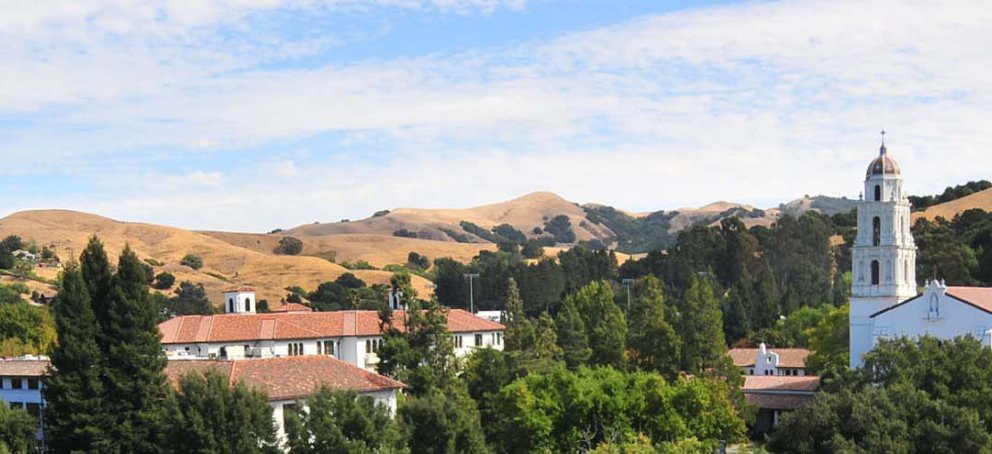Water Conservation
May 5, 2015
Saint Mary’s College has been implementing water conservation strategies throughout the campus for many years. Nearly 10 years ago, waterless urinals were installed in most campus public restrooms and many residential restrooms. On average, these urinals have been saving nearly 40,000 gallons of water per urinal, per year. Other initiatives have included planting with drought-tolerant landscape and utilizing ground coverings, such as mulch chips, to beautify the campus without needing to irrigate. We have also been using low-flow shower heads in the residential buildings for many years, and in 2012, we replaced a natural turf field with an artificial turf field.
In January, 2014, Facilities Services repurposed a grounds position to hire an irrigation specialist. This position is focused on locating and repairing pipe leaks and broken sprinkler heads, monitoring and making adjustments to the watering schedules, and making recommendations for further improvements, such as utilizing water meters and new technology to monitor and manage our resources as effectively as possible.
In response to the Governor’s request for a voluntary reduction in water consumption in January 2014, Facilities Services implemented the following on-going strategies for conserving water:
- Reductions in watering by 20% to 50% in areas with mature landscaping by re-programming irrigation timers.
- Reducing water run-off when irrigating by breaking irrigation cycles into segments and shortening the length of time the systems are running. For example, rather than watering for 12 minutes, two six-minute cycles would be used so that irrigation water has a chance to sink into the ground.
- Turning irrigation controllers off in areas where landscaping could be changed to mulch and other types of ground coverings that do not require irrigation.
- Future projects and landscape planning, including new landscape guidelines, will include drought-tolerant plants.
- Replacing toilets with low flow flushing.
- Replacing aerators on sink faucets to water restrictors.
- In partnership with the offices of Campus Housing and Residential Experience, we initiated a campaign to encourage students to reduce the length of their showers, to utilize full loads when laundering their clothing, to turn the water off while brushing their teeth, wash cars less frequently, and to reuse towels (ie. Launder them less frequently). We have also been encouraging students to report leaking toilets and sinks to our office by submitting a work order.
These voluntary water conservation strategies have already contributed to a 13% to 15% reduction in the campus’ water usage, based on Saint Mary’s 2013 utilization.
Facilities Services is now implementing these additional strategies in response to the Governor’s mandate for the State to reduce overall water consumption by 25%. East Bay Municipal Utility District (EBMUD) has issued a reduction goal for Saint Mary’s of 20% from 2013 utilization. The following strategies will be implemented to meet our reduction target:
- Raising the blades on mowers to trap moisture in the lawns and adding more frequent aeration.
- Many areas have been identified as non-irrigation sites. They will be identified with the signage shown at the top of this page.
- In general, irrigation of campus lawns and shrubs will be reduced by 50% and 30%, respectively. The Chapel Lawn and athletic fields are not currently being considered for reductions, however, they will be closely monitored by our staff to ensure they are not over-watered.
- In areas with mature and hardy shrubbery, irrigation systems will be turned-off and the areas will be hand-watered, as needed.
- Reduce hot-water wait times for showers by installing hot water circulation pumps. We are currently assessing areas where this strategy could be utilized.
- Continue to work in partnership with the offices of Campus Housing, Residential Experience, and New Student Orientation to encourage all students to use our water resources responsibly.
Other Considerations:
- Athletic fields are mission critical facilities and will be maintained to meet NCAA standards for playability and safety.
- Athletic field repairs (post-commencement and post-summer camps) which require re-seeding or re-sodding may result in shorter, more frequent irrigation cycles. While we may not be increasing the amount of water we use, we need to spread the irrigation cycles throughout the day to keep the soil moist.
- While Facilities Services has always been prompt in fixing broken pipes on the main water lines, we would attempt to schedule such repairs during non-peak hours. Moving forward, all broken water lines will be fixed immediately, which may impact the campus community for a short period of time. We will ensure we have an appropriate supply of materials on-hand so that down-times can be as short as possible.
